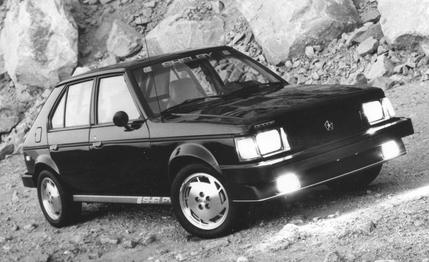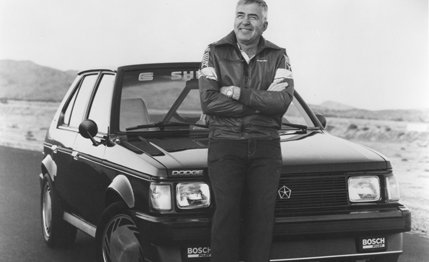 Archived Short Take Road Test
Archived Short Take Road Test

Some guys come out of the box red-hot. Others take longer to get on the cam. Mozart gave concerts at age eight. Boris Karloff was 44 before he landed his first major role as the monster in Frankenstein.
Although wunderkinds—the Steven Spielbergs and the Bobby Fischers—grab a lot of ink early on, there’s something to be said for late bloomers. They often perform more consistently, they tend to be less frenetic, and they approach their work with confidence and self-assurance that only age and experience can provide. The GLHS is a case in point.
Okay. We all know the history. The Omni/Horizon twins, which provide the basis for this latest rendition of the GLH, have been around for what seems like decades. Actually, only since 1978. With cars, though, as with dogs, eight years is forever. If the Omnirizon were a building, it would qualify for landmark status. Over the years, Chrysler’s small-car line has been equipped with a variety of engines and has performed a multitude of roles. It’s been an import fighter, it’s been both dressed up and stripped down to fill marketing holes in the Chrysler lineup, and, starting last year, it’s been outfitted as the GLH (Goes Like Hell) in the full battle dress of an ornery street marauder.

This year, the GLH has been taken under the wing of Carroll Shelby. If you’ve been held incommunicado in a padded cell for the past few years, you might not know that Mr. Shelby is back in the car business and that this time he’s playing with Dodges. A new venture called Shelby Automobiles in Whittier, California, will produce some 500 GLHSs this year, which will be sold through Dodge dealers who sign up for Shelby franchises.
The transformation from the 146-hp GLH to the 175-hp GLHS begins with the addition of an air-to-air intercooler and a Shelby-designed intake manifold to the stock 2.2-liter Turbo II engine. The intercooler allows 12-psi maximum boost pressure, 3 psi more than the standard GLH has. As a result, the torque peak goes up from 168 to 175 pounds-feet.
Further modifications include the installation of low-pressure gas-charged Koni shocks all around and an upgrade in the tire department from 195/50HR-15 Eagle GTs to 205/50VR-15 Gatorbacks. Rear ride height is reduced about half an inch. The GLH’s standard one-inch front and five-eighths-inch rear anti-roll bars are left alone. The Shelby treatment also includes a tape package (you can always peel it off) and six-inch cast-aluminum Shelby Centurion wheels.